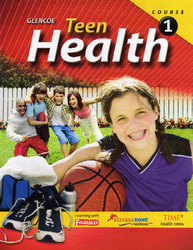
Teen Health Course 1Chapter 1: Your Health and WellnessStudent Web Activities - Teacher CenterLesson 1 Answers 1. Three steps you should follow every day to stay healthy are:
2. A healthy eating plan:
3. Eating a variety of foods will give your body a variety of essential nutrients for good health. 4. You should get at least 30 minutes of physical activity on most days of the week. 5. To get the most nutrition out of your calories, you should pick foods like fruits, vegetables, whole grains, and fat-free or low-fat milk and milk products more often. Additional Resources for Teachers On the Web sites below, you will find not only some good material about maintaining your health, but articles written by teens who understand how to get and stay healthy.
Lesson 2 Answers 1. The first thing you should do is think. 2. Answers will vary, but should include three of the following:
3. The four options listed are:
4. Compromise requires the ability to think through and solve problems. You can practice your ability to analyze problems and come up with reasonable alternatives. 5. You can talk to your clsoe friends, your parents, or get help from trusted adults such as school counselors, coaches, or teachers. Additional Resources for Teachers You might want to explore specific examples of peer pressure that are particularly difficult for teens such as the pressure to drink, smoke, or become a member of a gang. Some of the web sites below will lead you to information on these specific topics.
|  |















